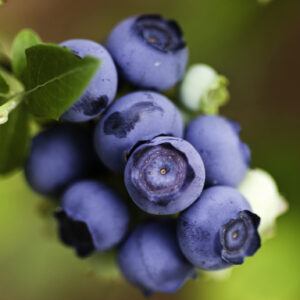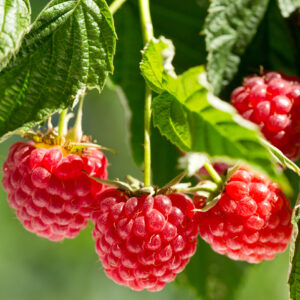Growing berries
Berries are a delicious treat, especially those picked fresh from your own garden. Berries that do well in gardens include strawberries, all the brambles (raspberries, thornless blackberry, tayberry and others), blueberries and the delicious new kiwiberry. It makes your mouth water just thinking about them!
 Strawberries
Strawberries
Strawberries can be grown just about anywhere there’s a sunny spot. These pretty, low-growing plants suit a container, raised vegetable bed or a garden bed. They are even grown in vertical gardens.
Strawberries are sold in small pots or as virus-free crowns. If planting them in a container, use good quality potting mix. In the garden, enrich the soil with compost and aged manure before planting.
Space plants about 30 centimetres apart. Water the little strawberry plants with liquid seaweed after planting. This tonic helps the plant settle in. Continue to liquid feed with a fertiliser containing seaweed every two weeks from when the flowers start to appear. Keep the plant well watered at all times.
To keep the berries off the soil and avoid fungal diseases or attack by a passing slug or snail, surround the new plant with organic mulch such as lucerne straw or pine needles.
Snails and slugs can be controlled by regularly picking them off by hand (look under and through the plant and check plants after rain) or by using iron-based snail bait, which is safe for pets and wildlife. And, speaking of wildlife, if there are lizards or birds in your garden, place a protective cage over the fruit to stop it being pinched!
Plants keep fruiting into spring and thrive for two to three years before they need replacing. To keep plants compact and productive, remove runners (new branching growth). Runners can be used to grow new plants.
Click to browse our range of strawberries.
 Blueberries
Blueberries
Blueberries are grown like azaleas and rhododendrons, have similar needs and suit a wide range of gardens. They are shrubby plants that prefer slightly acidic soil and can be grown in the ground or in a pot (use an azalea potting mix). Plants can reach 1 to 2 metres high. The most successful varieties have low-chill requirements. Fruit forms quickly after the flowers appear. The fruit is highly desirable to birds so netting or a cage to keep birds away is a must as is regular watering for large, succulent berries. Ripe berries are dark blue, sweet and easy to pick. ‘Blueberry Burst’ is a popular, easy-to-grow new variety with very large fruit over many months during spring and summer.
Click to browse our range of blueberries.
Kiwiberries
Kiwiberries are vines that produce small, smooth-skinned kiwifruit. The fruit is about the size of a large green grape and is new to Australia. They are best grown on a pergola or other support as plants can grow 5 metres high and 3.5 metres wide. These plants have male and female flowers on separate plants. The female vines produce fruit, provided there’s at least one male plant available to provide pollen, or look for multi-grafted plants. Prune kiwiberries in winter while they are dormant to maintain their size.
 Bramble berries
Bramble berries
‘Bramble’ is the catchall term for berries that grow on thorny canes such as raspberry, blackberry, loganberry, boysenberry, marionberry and tayberry.
These sprawling plants start off as bare canes but soon form long branches. They need full sun and support from a wire or fence. All brambles need ongoing training and are pruned after harvest or in winter.
Autumn-fruiting or Heritage varieties have lower chilling needs than other varieties, so grow in a wider climate range including Sydney. Loganberries also need a cool climate to produce a crop.
Probably the easiest brambles to grow are thornless blackberries. These plants are robust and a world away from their weedy relative as they have soft thorns and large, juicy fruit that ripens in summer. The plants tolerate a little afternoon shade but flavour is best in full sun.
Boysenberry and tayberry, which are closely related to the blackberry, are also productive in warm climates. Both like a rich, well-nourished and well-drained soil and regular water. Allow two metres between each plant. Bramble fruit needs protection from birds and fruit fly.
A note on pruning
To best manage berries, check each plant’s label for detailed pruning information.

